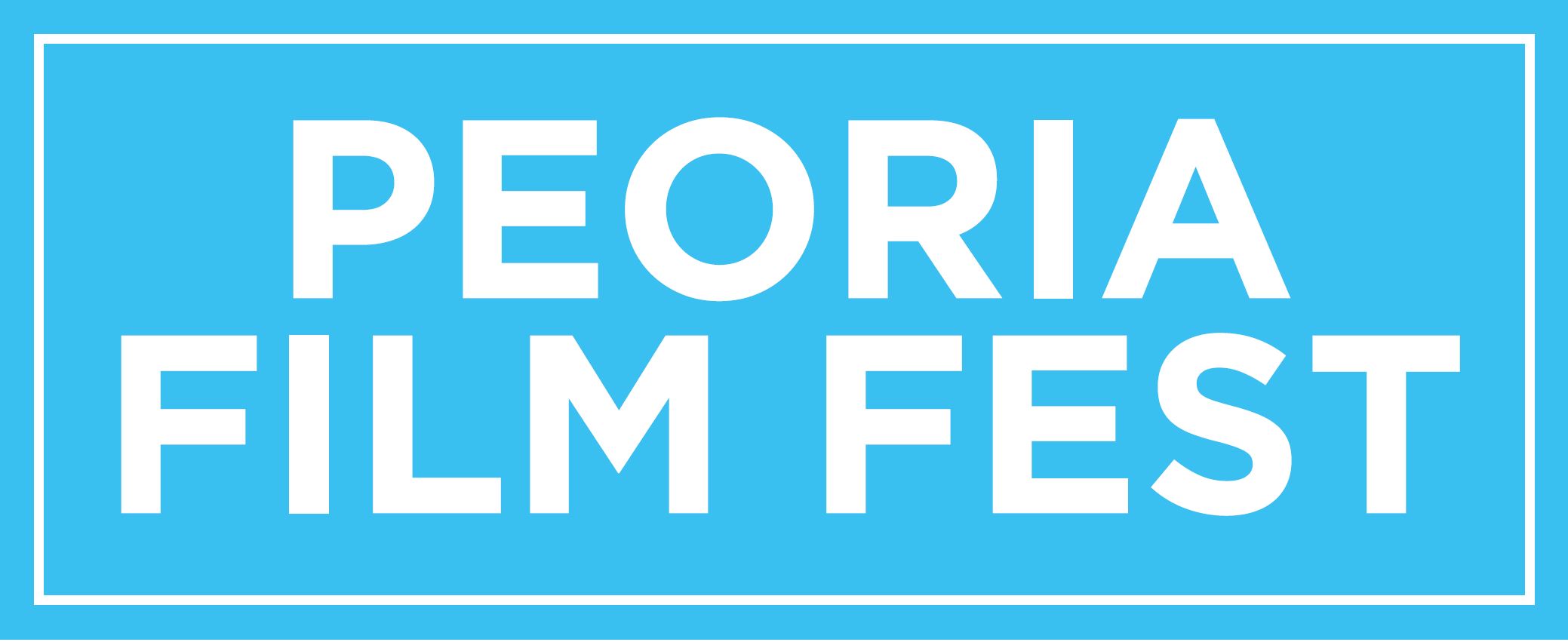Interview – Novelist Nicholas Sparks, a producer of “The Choice” (2016)
Novelist Nichola s Sparks made a choice to stop by Phoenix and talk about “The Choice” (2016), a new film based upon his 2007 novel with the same title. Benjamin Walker and Teresa Palmer star in this love story, and Nicholas is also a producer of this cinematic project. He sat down and spoke with the Phoenix Film Festival and three other critics/journalists during a group interview and discussed lots of topics, including the on-screen chemistry with the lead characters, elements of his personality and personal experiences within his novels and whether or not men routinely ask him for advice about women. “The Choice” opens on Friday, Feb. 5th.
s Sparks made a choice to stop by Phoenix and talk about “The Choice” (2016), a new film based upon his 2007 novel with the same title. Benjamin Walker and Teresa Palmer star in this love story, and Nicholas is also a producer of this cinematic project. He sat down and spoke with the Phoenix Film Festival and three other critics/journalists during a group interview and discussed lots of topics, including the on-screen chemistry with the lead characters, elements of his personality and personal experiences within his novels and whether or not men routinely ask him for advice about women. “The Choice” opens on Friday, Feb. 5th.
PFF: Now that you are a producer for some of your movies, what is like seeing your stories from a producer’s point of view?
NS: It is a lot of fun. I love the fact that viewers are going to (experience) the story that I can conceived (in a new way). I had my chance to tell the story the way I wanted it in the novel, but let’s see what someone else does with my story. Who are we going to cast? How do we frame this? What elements do we keep, and what do we change to capture the whole spirit of the story and characters? So, for me, it’s just a wonderful way to experience a story in a different medium.
PFF: You have been doing this a long time, and I still find it refreshing - after all of these years - that you continue to offer love stories from a man’s perspective. Do men often approach you and ask for advice about women?
NS: No. In fact, I do not know if that has ever happened before. How about that? I am not recognized by men. I am not recognized by women sometimes but never by men. I am seldom recognized at all. In the history of my career, as far as I know, outside of my hometown, I have probably been recognized less than a dozen times. There was a lady sitting next to me on the plane reading my book, and she didn’t recognize me.
PFF: Travis (Walker) and Gabby (Palmer) had such great on-screen chemistry. How did you go about bringing the characters to life?
NS: First, we cast people who we thought were immensely talented, and then during the casting process, we looked for chemistry checks. Do they seem to get along? Do they seem to be friends? Teresa is one of those personalities that draws everyone in, and so does Ben, in fact. So, what they had was just magnetic, even in the reads. When we put them on-screen, you (see) them on the big picture, and it just really comes across as being incredible.
PFF: Travis’ relationship with his sister Stephanie (Maggie Grace) was very entertaining. Is there  something in your personal life that you drew from for these siblings?
something in your personal life that you drew from for these siblings?
NS: I was very close to my siblings growing up, and I am still incredibly close to my brother. We actually took a trip around the world, and I wrote a nonfiction book about (the experience) called “Three Weeks with My Brother” (2004). I was close with my sister too, but she passed away with a brain tumor about 16 years ago. So, the relationship between Travis and Stephanie was very much inspired with the relationship I had with my siblings. I had parents that stressed the fact that your siblings will always be around. Friends will come and go, but your family is there forever. In many ways, they are the people that you can tell anything to, and they still keep coming back.
PFF: We talked about the casting earlier, and I enjoyed the supporting actors as well, such as Tom Wilkinson and Tom Welling. Now, did anyone make any jokes on set about Ben stealing Superman’s girlfriend? (Welling played Superman in TV’s “Smallville” (2001 – 2011))
NS: There were no particular jokes about that, but we (wanted) all of those (supporting) characters to have arcs. The father (Wilkinson) had an arc. The sister had an arc, and because they all had arcs, we asked (the actors) to do various things emotionally. We wanted (the actors) to be very comfortable, really experimenting, pressing themselves, going out on a limb, and really allowing the characters to evoke emotions in the viewer in a real way. We did that by having (the making of the movie) become a family setting. When we were filming the backyard barbeque scene, it was almost as though (we looked at each other and said), “Are we actually filming? It feels like we are having a (real) backyard barbeque.” Dogs are running around. There are kids over there. The sun is beautiful. It’s warm. You are wearing shorts and cooking on the grill. We couldn’t believe that we were working.
PFF: Have you ever thought about writing a screenplay and producing a movie yourself?
NS: Sure I have, and I have chosen to do that in television. I think that’s because television is more similar to novels, because there is more opportunity to tell a specific story. For instance, I am currently writing a pilot for HBO, and they will give me 10 episodes to tell a full story.
 PFF: Trauma is involved in many of your novels. Do you think trauma makes your stories better?
PFF: Trauma is involved in many of your novels. Do you think trauma makes your stories better?
NS: I write in a very distinct genre, and it’s really called a love story as distinguished from a romance novel. A romance novel is really about romantic fantasy, and it’s really supposed to allow the reader to escape into a world. When you go through (the story’s) conflicts, you pretty much know that the couple is going to get together in the end. That’s what romance novels are about. That’s why (people) read them, and it’s certainly a wonderful genre. This is a love story, and it’s a little bit different. It is not necessarily romantic fantasy, although there are romantic elements. The purpose is to move the reader or viewer through all of the emotions of life to make it feel real. You might call it romantic realism versus romantic fantasy. That realism requires that the reader or viewer feels all of the emotions of life, because otherwise, something is missing. The simple fact of life is everyone goes through tragedy. There’s not one of us that will escape scot-free. We have characters that feel real. They go through emotions that feel real. They allow you as a reader or viewer to live someone else’s life, but to feel like it was a full life. You got it all, even though it was just a snippet of a point in time.
PFF: Do you want write in a different genre?
NS: No, I don’t. I am very happy with the kind of novels that I write. One of the wonderful things about (love stories) is I am able to pull elements from all sorts of other genres and build them into my novels. For instance, “See Me” (2015) is my latest novel. It’s a love story, but somewhere around the halfway point, it starts devolving into a very twisty, mystery thriller. Part of the fun of that novel is the tension increases, and (the reader) is not even sure what’s going on. The reader is as confused as the characters. So, I can put elements of mystery into my novels. I put elements of the supernatural in “Save Haven” (2010). I’ve done epic, sweeping stories like “The Longest Ride” (2013). So, all of these elements that are particular to various genres, I am able to put them into mine.
PFF: Have you or are you now writing with a specific actor in mind?
NS: The only time I did that was for “The Last Song” (2010) (with) Miley Cyrus (as the lead character), and that’s because I wrote with Disney on the project.
PFF: How much of yourself do you put into your characters?
NS: Depending upon the story, some have elements from me. Well, of course, I am the writer, so I guess everything is (from me) in one sense, and specific aspects of my personality (fall into the story). If a character likes to run, well, that is because I like to jog. Sometimes though, you write to what you inspire to be or something familiar to you. With Travis, I was trying to capture my brother. Travis was a character inspired by my brother who was this great bachelor. He lived “the life” for 10 years before he got married and was really very good at living the bachelor life. So, Travis was more of capturing my brother or the flavor of him, than it was about capturing me. So you put bits and pieces of yourself here and there when it’s necessary, and you put bits and pieces of other people or your imagination into others.
PFF: Religion became part of the narrative of “The Choice”. In the backstory, the film explains how Travis pulled away from his faith as a teenager. Do you think after the movie ended, Travis would go back to his faith?
NS: I think it would be difficult for Travis not to go back to his faith, but of course, that’s just my opinion on the matter. Religion was not an element within the novel. This was an element that came about in the film. Ben Walker might be a better person to ask to give his version of the character.
PFF: When watching “The Choice”, I thought of another film for a very different reason. In “45 Years” (2015), the husband – during his 45th wedding anniversary said that all of the big decisions or choices are made when we are young. He seemed to carry a very defeatist attitude towards life, but I’d like to think that we make life-changing choices every day. What do you think?
NS: Of course. (Now), there is some validity (to that character’s statement). When you are young is usually when you choose your career. You might choose a partner or a spouse. You decide whether or not to have children. If you are a woman and all of a sudden, you are 50 and never had children, you cannot bear children (any longer). You might be able to adopt, but you cannot bear them. Some choices by the nature of time itself (are made) when you are young, however, there are always major choices one can make. There is always the kind of life that you want to live and the new struggles or new sufferings that you are willing to experience to get that. You want to climb Mt. Everest? Sure, some have done that in their 70s. Alright, do you want to do all of that suffering, all of that training? Are you willing? Do you really want to climb Everest? That would be a choice, and it’s possible.

 ‘The Finest Hours’ somehow loses track of its emotional core
‘The Finest Hours’ somehow loses track of its emotional core
 Mojave
Mojave
 Ip Man 3
Ip Man 3
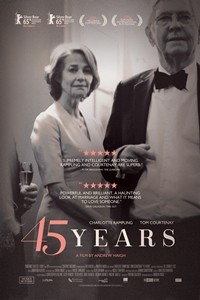 ’45 Years’ captures a lifetime of drama in one particular week
’45 Years’ captures a lifetime of drama in one particular week
 13 Hours: The Secret Soldiers of Benghazi
13 Hours: The Secret Soldiers of Benghazi
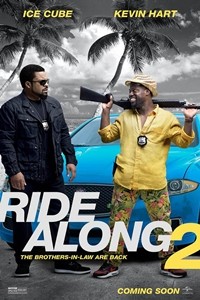 “Ride Along 2” - “Ride Along 2” sets cruise control and puts us to sleep
“Ride Along 2” - “Ride Along 2” sets cruise control and puts us to sleep
 Anomalisa
Anomalisa
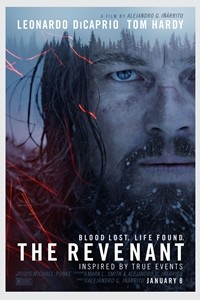 The Revenant
The Revenant
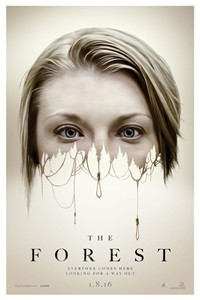 'The Forest' gets lost in the shuffle of better horror films
'The Forest' gets lost in the shuffle of better horror films
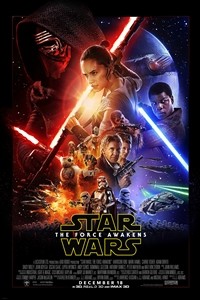 Star Wars: The Force Awakens — Not only did J.J. Abrams right the ship that is Star Wars, he found himself on par with the original trilogy thanks to careful writing, exceptional special effects and new, interesting layers to the Star Wars mythology. I never knew I needed a Finn, Rey, Poe Dameron or Kylo Ren in place of Han, Luke and Leia — who return anyway — but here they after one movie and I can’t imagine the franchise without them anymore. Yes, there was a lot of hype on this one, but meeting the hype and even surpassing it at this level is really a rare feat.
Star Wars: The Force Awakens — Not only did J.J. Abrams right the ship that is Star Wars, he found himself on par with the original trilogy thanks to careful writing, exceptional special effects and new, interesting layers to the Star Wars mythology. I never knew I needed a Finn, Rey, Poe Dameron or Kylo Ren in place of Han, Luke and Leia — who return anyway — but here they after one movie and I can’t imagine the franchise without them anymore. Yes, there was a lot of hype on this one, but meeting the hype and even surpassing it at this level is really a rare feat.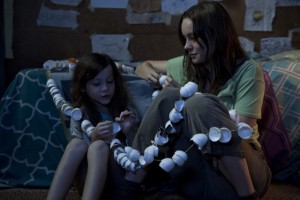 Room — Featuring two of the most inspiring performances of the year, Room is ripped from the headlines in the most compassionate way possible. It begins with a teenage girl (Brie Larson) who is kidnapped and held in seclusion in her rapist’s backyard shed that has been converted into her soundproof prison. Room picks up six years into her ordeal, and she now has 5-year-old son Jack (Jacob Tremblay), whose entire world is the four walls, floor and ceiling of the cell, which he refers to as “room” the way we refer to the planet as Earth. Although the product of a rape, and confined to one room for his whole life, Jack has been taught about the wonder of the world by his mother, whose innocence was stolen so long ago. What could be a grim drama, and it certainly has those moments, Room is largely about the good that a mother can inspire in her child and the love that brings them together to conquer their prison.
Room — Featuring two of the most inspiring performances of the year, Room is ripped from the headlines in the most compassionate way possible. It begins with a teenage girl (Brie Larson) who is kidnapped and held in seclusion in her rapist’s backyard shed that has been converted into her soundproof prison. Room picks up six years into her ordeal, and she now has 5-year-old son Jack (Jacob Tremblay), whose entire world is the four walls, floor and ceiling of the cell, which he refers to as “room” the way we refer to the planet as Earth. Although the product of a rape, and confined to one room for his whole life, Jack has been taught about the wonder of the world by his mother, whose innocence was stolen so long ago. What could be a grim drama, and it certainly has those moments, Room is largely about the good that a mother can inspire in her child and the love that brings them together to conquer their prison.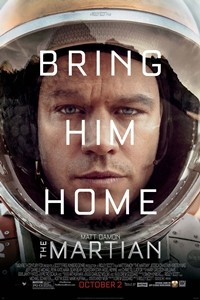 defeats, and how they add up to tell a story about science. We tend to forget that science got us up there in the cosmos, and science will bring us down, so to see science and engineering given such a starring role is a powerful reminder of what, and who, NASA is. When Matt Damon’s botanist is marooned on Mars, he does what any astronaut would do: “I’m going to have to science the shit out of this.” What follows is a thrill-ride involving radiation, poopy soil, ASCII translation, solar panels and hydrogen-burning water factories. Scott is no stranger to space having made Alien and Prometheus, but The Martian is a wholly unique endeavor for Scott and his gifted eye. It’s hopeful and upbeat, and even though millions of miles separate the Martian from earth victory is always within his grasp.
defeats, and how they add up to tell a story about science. We tend to forget that science got us up there in the cosmos, and science will bring us down, so to see science and engineering given such a starring role is a powerful reminder of what, and who, NASA is. When Matt Damon’s botanist is marooned on Mars, he does what any astronaut would do: “I’m going to have to science the shit out of this.” What follows is a thrill-ride involving radiation, poopy soil, ASCII translation, solar panels and hydrogen-burning water factories. Scott is no stranger to space having made Alien and Prometheus, but The Martian is a wholly unique endeavor for Scott and his gifted eye. It’s hopeful and upbeat, and even though millions of miles separate the Martian from earth victory is always within his grasp. The Big Short — It’s remarkable that Americans lost their jobs, lost their homes, were uprooted from their lives and scattered to the wind and many still don’t know what caused the recession, and why. The Big Short is the blueprint for the whole damn thing: the housing bubble, the sub-prime mortgage calamity, the collapse of Wall Street, the imploding bond market … all of it, every ugly derivative and security swap from day traders right on up to CEOs. The fact that Adam McKay’s movie, based on Michael Lewis’s book, is both informative and devilishly funny is the film’s saving grace. It’s also supremely well acted, it routinely breaks the fourth wall to address us directly, is edited with style and purpose, and paced so viewers can laugh and learn at the same time. There’s a lot going on here, but The Big Short succeeds in holding it all together with a vengeance.
The Big Short — It’s remarkable that Americans lost their jobs, lost their homes, were uprooted from their lives and scattered to the wind and many still don’t know what caused the recession, and why. The Big Short is the blueprint for the whole damn thing: the housing bubble, the sub-prime mortgage calamity, the collapse of Wall Street, the imploding bond market … all of it, every ugly derivative and security swap from day traders right on up to CEOs. The fact that Adam McKay’s movie, based on Michael Lewis’s book, is both informative and devilishly funny is the film’s saving grace. It’s also supremely well acted, it routinely breaks the fourth wall to address us directly, is edited with style and purpose, and paced so viewers can laugh and learn at the same time. There’s a lot going on here, but The Big Short succeeds in holding it all together with a vengeance.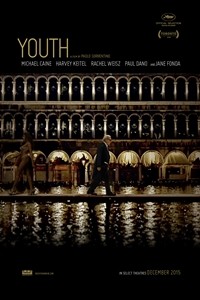 “Youth” - Director Paolo Sorrentino offers a story of two longtime friends - played by Michael Caine and Harvey Keitel - who ponder big and small questions under a backdrop of an extravagant hotel in the Swiss Alps. Sorrentino intermingles stunning visuals and pleasing sounds with intimate conversations, and Caine and Keitel are at the top of the game.
“Youth” - Director Paolo Sorrentino offers a story of two longtime friends - played by Michael Caine and Harvey Keitel - who ponder big and small questions under a backdrop of an extravagant hotel in the Swiss Alps. Sorrentino intermingles stunning visuals and pleasing sounds with intimate conversations, and Caine and Keitel are at the top of the game.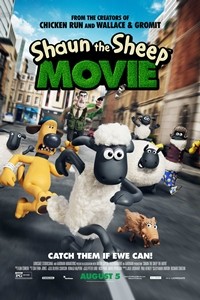 engineers a day off for the flock but inadvertently creates a big problem for the farmer. The painstaking top-motion animation (from Aardman Animations, the “Wallace and Gromit” folks) is only topped by the totally creative narrative and endearing characters.
engineers a day off for the flock but inadvertently creates a big problem for the farmer. The painstaking top-motion animation (from Aardman Animations, the “Wallace and Gromit” folks) is only topped by the totally creative narrative and endearing characters.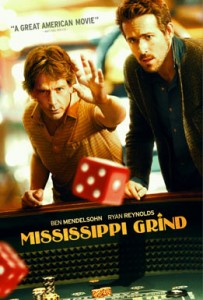 “Mississippi Grind” - Gerry (Ben Mendelsohn) and Curtis (Ryan Reynolds) are a pair of degenerate gamblers who embark on a sooty trip down America’s most famous river to make some bucks. They form an immediate friendship and share great on-screen rapport, while directors/writers Anna Boden and Ryan Fleck make us literally flip a coin to guess if they will win or lose at every turn. Mendelsohn’s performance deserves an Oscar nomination.
“Mississippi Grind” - Gerry (Ben Mendelsohn) and Curtis (Ryan Reynolds) are a pair of degenerate gamblers who embark on a sooty trip down America’s most famous river to make some bucks. They form an immediate friendship and share great on-screen rapport, while directors/writers Anna Boden and Ryan Fleck make us literally flip a coin to guess if they will win or lose at every turn. Mendelsohn’s performance deserves an Oscar nomination.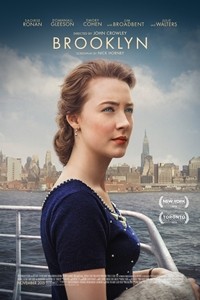 life in the bustling streets of New York City while struggling with the emotional pulls of home in County Wexford. Along with Eilis’ (Ronan) homesickness, writer Nick Hornby pens several amusing and warm moments with her boarding housemates and a new love interest, and with the film’s throwback vibe to pictures of yesterdecade, “Brooklyn” is the most graceful and lovely cinematic experience of the year.
life in the bustling streets of New York City while struggling with the emotional pulls of home in County Wexford. Along with Eilis’ (Ronan) homesickness, writer Nick Hornby pens several amusing and warm moments with her boarding housemates and a new love interest, and with the film’s throwback vibe to pictures of yesterdecade, “Brooklyn” is the most graceful and lovely cinematic experience of the year.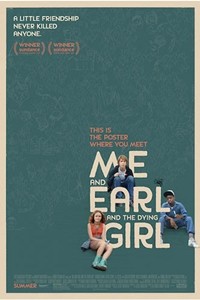 “Me and Earl and the Dying Girl” - In one of the most effective high school stories in long memory, a self-doubting teen (Thomas Mann) befriends a fellow student stricken with leukemia (Olivia Cooke), and the particularly well-written script provides an equally hilarious and affecting journey about teenagers coping with untimely circumstances. Director Alfonso Gomez-Rejon guides the material with a Wes Anderson-like flair, as Mann, Cooke and RJ Cyler (as Earl) deliver especially likable and sympathetic performances while navigating through the clumsy, exposed and thoughtful emotions of youth.
“Me and Earl and the Dying Girl” - In one of the most effective high school stories in long memory, a self-doubting teen (Thomas Mann) befriends a fellow student stricken with leukemia (Olivia Cooke), and the particularly well-written script provides an equally hilarious and affecting journey about teenagers coping with untimely circumstances. Director Alfonso Gomez-Rejon guides the material with a Wes Anderson-like flair, as Mann, Cooke and RJ Cyler (as Earl) deliver especially likable and sympathetic performances while navigating through the clumsy, exposed and thoughtful emotions of youth.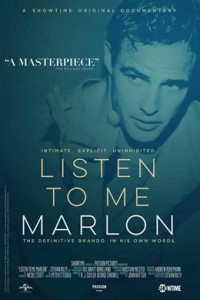 chronicled hundreds of hours of personal audio recordings as a diary of sorts, and director Stevan Riley pieced together the man’s personal thoughts in a truly amazing reveal over a 1 hour 43 minute runtime. Paired with photos and historical video footage of movie clips and interviews, Brando - in his own words - recites and reflects his innermost views on his romantic relationships, colleagues, preparation for his most coveted roles, and his painful childhood. This extraordinary find is easily the documentary of the year.
chronicled hundreds of hours of personal audio recordings as a diary of sorts, and director Stevan Riley pieced together the man’s personal thoughts in a truly amazing reveal over a 1 hour 43 minute runtime. Paired with photos and historical video footage of movie clips and interviews, Brando - in his own words - recites and reflects his innermost views on his romantic relationships, colleagues, preparation for his most coveted roles, and his painful childhood. This extraordinary find is easily the documentary of the year.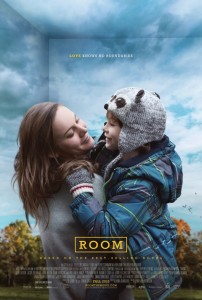 “Room” - Brie Larson delivers the performance of year as a young mother living in an uncommonly cramped one-room space with her 5-year-old son (Jacob Tremblay). The movie initially presents the circumstances of their odd living situation as a confusing puzzle, but eventually the secrets of “the room” are revealed, and the narrative then splits from one incredibly difficult challenge to an altogether different confrontation. Narrated - at times - by Jack (Tremblay), this raw story expresses the beauty of our everyday world through a child’s voice, and Ma (Larson) professes the feverous bond of mother and child through her actions.
“Room” - Brie Larson delivers the performance of year as a young mother living in an uncommonly cramped one-room space with her 5-year-old son (Jacob Tremblay). The movie initially presents the circumstances of their odd living situation as a confusing puzzle, but eventually the secrets of “the room” are revealed, and the narrative then splits from one incredibly difficult challenge to an altogether different confrontation. Narrated - at times - by Jack (Tremblay), this raw story expresses the beauty of our everyday world through a child’s voice, and Ma (Larson) professes the feverous bond of mother and child through her actions.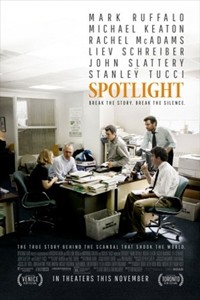 McAdams, and Liev Schreiber), director/co-writer Tom McCarthy provides a wholly mesmerizing account of a tenacious group of Boston Globe reporters who uncover a widespread Catholic priest sexual abuse scandal. The journalists bang on figurative locked doors while dozens of Boston players - big and small - carry differing agendas to expose or cover up the sordid details. McCarthy opens up a world of exemplary journalism practices to the audience and reinforces the importance of the media as the Fourth Pillar of Democracy. This riveting movie leaves you hanging on every moment and is the best picture of 2015.
McAdams, and Liev Schreiber), director/co-writer Tom McCarthy provides a wholly mesmerizing account of a tenacious group of Boston Globe reporters who uncover a widespread Catholic priest sexual abuse scandal. The journalists bang on figurative locked doors while dozens of Boston players - big and small - carry differing agendas to expose or cover up the sordid details. McCarthy opens up a world of exemplary journalism practices to the audience and reinforces the importance of the media as the Fourth Pillar of Democracy. This riveting movie leaves you hanging on every moment and is the best picture of 2015. Monte Yazzie’s Best Films of 2015
Monte Yazzie’s Best Films of 2015
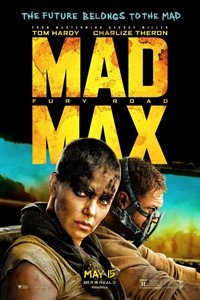 Imperator Furiosa, Ms. Theron confidently controls the film with stunning screen presence. Mr. Miller executes the film with exceptional style and skill, making “Mad Max: Fury Road” feel more suited for the arthouse than the grindhouse.
Imperator Furiosa, Ms. Theron confidently controls the film with stunning screen presence. Mr. Miller executes the film with exceptional style and skill, making “Mad Max: Fury Road” feel more suited for the arthouse than the grindhouse.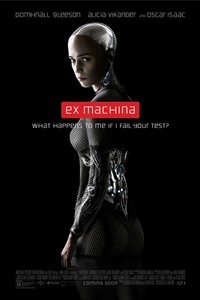 Machina”, a methodically structured film with an intelligent narrative directed by Alex Garland. While many of the films that deal with science fiction are cluttered with special effects, Mr. Garland utilizes these tools to build an impressive, beautiful, and emotional artificial being known as Ava, played impeccably by actor Alicia Vikander. “Ex Machina” focuses on relationships between men and women, the advancing world and how it connects with progressing technology, and the trappings and limitations of science. It is an exceptional film that asks difficult questions and allows the viewer to interpret the answers however they choose.
Machina”, a methodically structured film with an intelligent narrative directed by Alex Garland. While many of the films that deal with science fiction are cluttered with special effects, Mr. Garland utilizes these tools to build an impressive, beautiful, and emotional artificial being known as Ava, played impeccably by actor Alicia Vikander. “Ex Machina” focuses on relationships between men and women, the advancing world and how it connects with progressing technology, and the trappings and limitations of science. It is an exceptional film that asks difficult questions and allows the viewer to interpret the answers however they choose. fight a faceless foe. It’s a film that lingers in an atmosphere of fear and builds suspense in subtle yet effective ways. Whether the enchanting cinematography by Roger Deakins, which is a visual descent into darkness, or the narrative penned by Taylor Sheridan that displays the bleak disenchantment of the whole situation. “Sicario” is consistently tense and foreboding; it’s a film that drops the viewer in the middle of a frantic and confused setting, and then continues the journey amidst building chaos. Director Denis Villeneuve is a skillful director and “Sicario” is one of his best films.
fight a faceless foe. It’s a film that lingers in an atmosphere of fear and builds suspense in subtle yet effective ways. Whether the enchanting cinematography by Roger Deakins, which is a visual descent into darkness, or the narrative penned by Taylor Sheridan that displays the bleak disenchantment of the whole situation. “Sicario” is consistently tense and foreboding; it’s a film that drops the viewer in the middle of a frantic and confused setting, and then continues the journey amidst building chaos. Director Denis Villeneuve is a skillful director and “Sicario” is one of his best films. In the eighth film from Quentin Tarantino the director takes a group of unredeemable characters and locks them in a shack during a blizzard in post-Civil War Wyoming. The three-hour long epic, released in a special 70mm presentation, displays Mr. Tarantino meticulously building a mystery while also incorporating an interesting amount of social commentary that transcends beyond the time period depicted in the film; it’s compelling to see everything slowly unravel. The film finds further success with stunning cinematography and a beautiful score, composed by the legendary Ennio Morricone. “The Hateful Eight” is Quentin Tarantino self-indulgently doing what he does best.
In the eighth film from Quentin Tarantino the director takes a group of unredeemable characters and locks them in a shack during a blizzard in post-Civil War Wyoming. The three-hour long epic, released in a special 70mm presentation, displays Mr. Tarantino meticulously building a mystery while also incorporating an interesting amount of social commentary that transcends beyond the time period depicted in the film; it’s compelling to see everything slowly unravel. The film finds further success with stunning cinematography and a beautiful score, composed by the legendary Ennio Morricone. “The Hateful Eight” is Quentin Tarantino self-indulgently doing what he does best. Joy
Joy
 Blanchett and Mara offer award-worthy performances in ‘Carol’
Blanchett and Mara offer award-worthy performances in ‘Carol’




